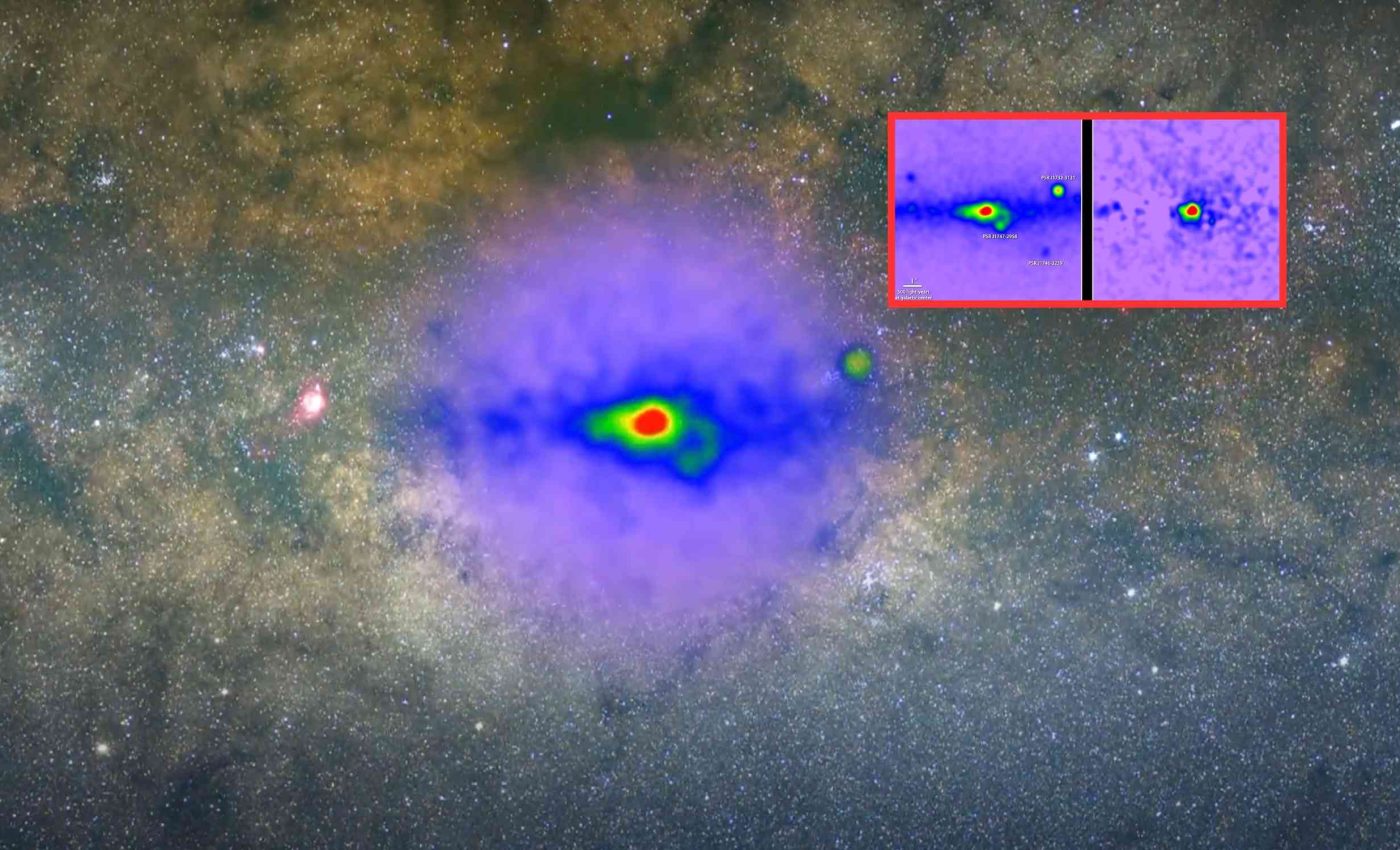
Gamma-ray burst in the galactic core divides scientists between two theories
A puzzling glow of high-energy light is shining from the center of the Milky Way, across a region thousands of light years wide. New supercomputer work shows that two ideas may explain the signal – dark matter or a huge crowd of fast spinning stellar corpses in our Milky Way galaxy.
The study’s bottom line is balance, not a verdict. It argues that dark matter can match the pattern at least as well as pulsars, while suggesting a way to discriminate between the two.
Dark matter in the Milky Way
The work was led by Moorits Mihkel Muru, an astrophysicist at the Leibniz Institute for Astrophysics Potsdam (AIP) and the University of Tartu. His research focuses on dark matter in galaxies and the structure of the Milky Way.
The research uses detailed simulations of Milky Way-like galaxies to test how a dark matter signal would look on the sky. It finds that the predicted shape is not a perfect sphere, which happens to match what the Fermi gamma-ray space telescope has seen.
NASA’s Fermi first mapped this excess of gamma-ray light in the inner galaxy. The map has held astronomers’ attention for more than a decade because known sources alone do not explain it.
Milky Way’s gamma-rays
The leading options for the origin of the Milky Way’s inexplicable light are a swarm of millisecond pulsars or collisions of dark matter. Both processes would produce high-energy photons, but they leave different fingerprints.
In the simulations, the central halo – the extended dark matter cloud around a galaxy – looks flattened and skewed by ancient mergers. That shape can create a sky pattern that lines up with the glow.
A careful statistical fit still leaves room for pulsars. Yet the pulsar idea needs many more sources in the core than have been counted so far.
Testing the competing models
The team compared the Fermi map to maps from galaxies grown inside a realistic local universe. They tracked the morphology – the overall shape and structure – of the dark matter in the inner few thousand light years.
Those galaxies are not perfect copies of the Milky Way, but they carry the same messy history. That history matters because it stirs the dark matter and tilts any light created by its particle interactions.
The upshot is subtle. Dark matter does not win outright, it becomes at least as credible as the pulsar alternative.
“Because dark matter doesn’t emit or block light, we can only detect it through its gravitational effects on visible matter. Despite decades of searching, no experiment has yet detected dark matter particles directly,” said Mihkel Muru.
That is why the glow is so tempting. If the photons really trace the invisible stuff, they would offer a long-sought indirect detection.
Dark matter and Milky Way history
European Gaia results showed that our galaxy collided with other systems early in its life. Those events puffed up the inner regions and likely left the dark matter off kilter.
A lopsided inner halo would beam out a lopsided gamma-ray map if dark matter particles collide and annihilate. That is the mechanism the new modeling put to the test.
Pulsars can also make structure. They trace old stars in the bulge and bar and can bunch up along those features.
If many tiny points are hiding in the glow, that would tip the scales to pulsars. If the light is smooth and follows the tilted inner halo, that would favor dark matter.
The Cherenkov Telescope Array Observatory (CTAO) will help untangle this. The observatory is being built to spot very high energy gamma rays with sharper vision than today’s ground-based systems.
Sharper images will let researchers split smooth light from clusters of points. That separation is the key test that the new work recommends.
Lessons from the galaxy’s bright core
The excess brightens a zone near the galactic center several thousand light-years across. The center itself sits about 26,000 light-years from Earth, roughly 154 quadrillion miles.
Gamma-rays are hard to make because they pack the most punch of any light. That is one reason the signal is so interesting from a physics point of view.
The alternative ideas are not equal in every detail. Pulsars would need to be far more numerous in the core than the current counts suggest.
A single clean detection of a dark matter particle in the lab would settle the big picture. Until then, sky-based clues like this glow will carry weight.
Astronomers need both lines of attack. The sky can guide the lab by pointing to the right energies and interactions to chase.
That feedback loop is how the field narrows down a very wide search. It is a patient kind of progress, built from cross checks rather than quick wins.
The study is published in Physical Review Letters.
—–
Like what you read? Subscribe to our newsletter for engaging articles, exclusive content, and the latest updates.
Check us out on EarthSnap, a free app brought to you by Eric Ralls and Earth.com.
—–













